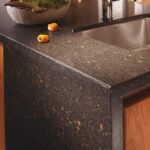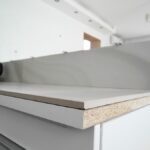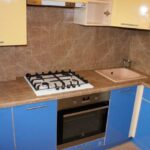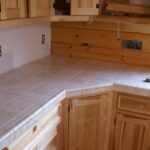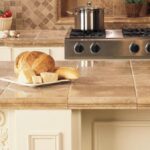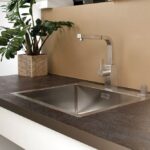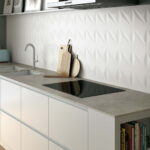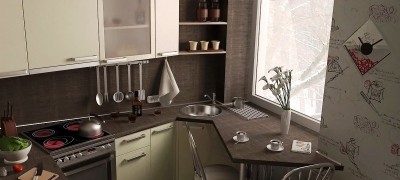Kitchen countertop made of porcelain stoneware
A porcelain stoneware worktop is a base that is tiled with porcelain stoneware tiles, with miniature tile joints. In the end area, it is recommended to use a material that is suitable in shade, quality and properties.

With a high budget, you can install a granite countertop in the kitchen, it will be durable and practical to use. A cheaper analogue is the manufacture of ceramic granite interior items.
The main budget material used to create countertops for a kitchen set is chipboard. Such products are not strong and durable, so not everyone likes them.

Stone countertops are distinguished by a more attractive visual component, they are not afraid of a humid environment, and it will be problematic to spoil their surface. The most profitable option is to modernize the working kitchen area with porcelain stoneware tiles.

Advantages and disadvantages of porcelain stoneware countertops
By choosing porcelain stoneware that visually repeats the texture of natural stone, you can get an excellent coating that will not be inferior in quality and strength to natural material. The cost of the product will cost 10 times cheaper than the stone counterpart.

Porcelain stoneware has a number of advantages, material:
- lasting;
- has a structural solid surface;
- wear-resistant;
- heat resistant;
- safe.

The surface will be wear-resistant with a low weight of the tabletop, which will not allow the structure to deform. The countertop is not afraid of chips and cracks, housewives can skip the cutting board and chop food right on the table. The material is moisture resistant, not afraid of oil, grease, dyes.

Porcelain stoneware copes well with high temperature conditions, so such a product can be placed next to the stove. The surface will not crack even after several years of use.
The material is harmless, does not emit hazardous substances, while microorganisms and bacteria will not grow on the table.

Porcelain stoneware also has disadvantages. The key one is processing complexity. Tile joints are considered a weak area. The grout may lose its fresh appearance over time, a dirty color will appear. Only replacing the inter-tile material will help to cope with such a problem.
How to choose the right porcelain stoneware
When choosing porcelain stoneware, pay special attention to the properties and dimensions of the tiles. A self-created countertop may have a different texture:
- Matt.
- Polished.
- Semi-matt.
- Embossed.
- Glazed.
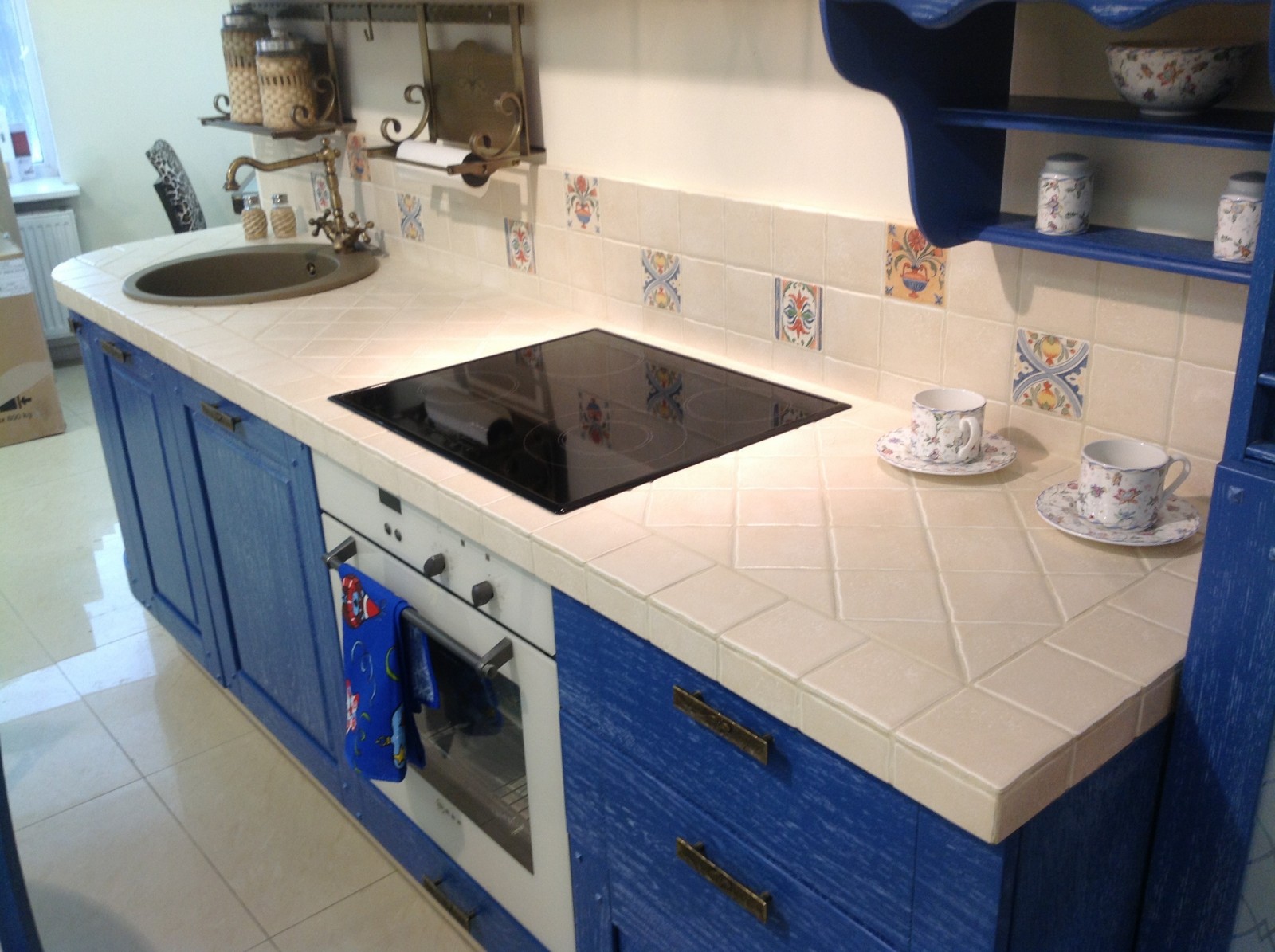
Glazed tiles have a glossy mirror finish, which is not particularly practical and requires special care. The smaller the tiles used, the more expensive the cladding of the product looks.
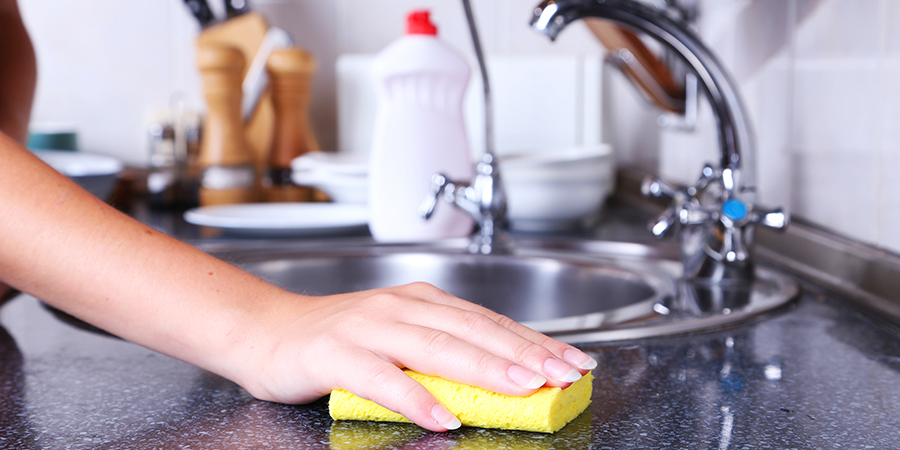
Making a countertop from porcelain stoneware
You can make a tabletop from porcelain stoneware with your own hands, without resorting to the help of professionals. The main thing is that all tiles correspond to the required dimensions and have smooth edges.
In work, you should adhere to the rules. The bearing surface area must be rigid and the tile joints do not need to be wider than 2 mm. Be sure to use a level frequently when laying.

After installation, the tiles on the kitchen countertop must be cleaned of the remains of grout and glue. First moisten the entire surface with cold water, and then treat everything with a weak solution of hydrochloric acid. Use only rubber gloves to keep your hands protected and not exposed to harsh chemicals.

Required materials and tools
For a quick and high-quality performance of work, you should prepare all the necessary materials and tools in advance.

When self-repairing, you cannot do without:
- level;
- roulette;
- square;
- protective glasses;
- knife;
- screwdriver;
- jigsaw;
- comb-spatula;
- sponges;
- rubber spatula;
- grinders with a disc designed for polishing a stone surface;
- tile cutter.
From the materials you will need to purchase:
- porcelain stoneware;
- plywood;
- sealant;
- grout;
- DSP;
- self-tapping screws;
- tile adhesive;
- masking tape.
Keep in mind that porcelain stoneware is highly durable and difficult to cut. Professionals use a diamond blade for sawing.

Fastening the base
First, remove the old cover and check the base to which it was attached. If there is no noticeable damage, it can be left to install a new tabletop. In terms of level, the mounted cabinets should not differ from each other. The base can be made from a piece of plywood of the desired size. It is better to opt for a double layer so that the tile is completely stable. Plywood is attached to the cabinets with self-tapping screws.
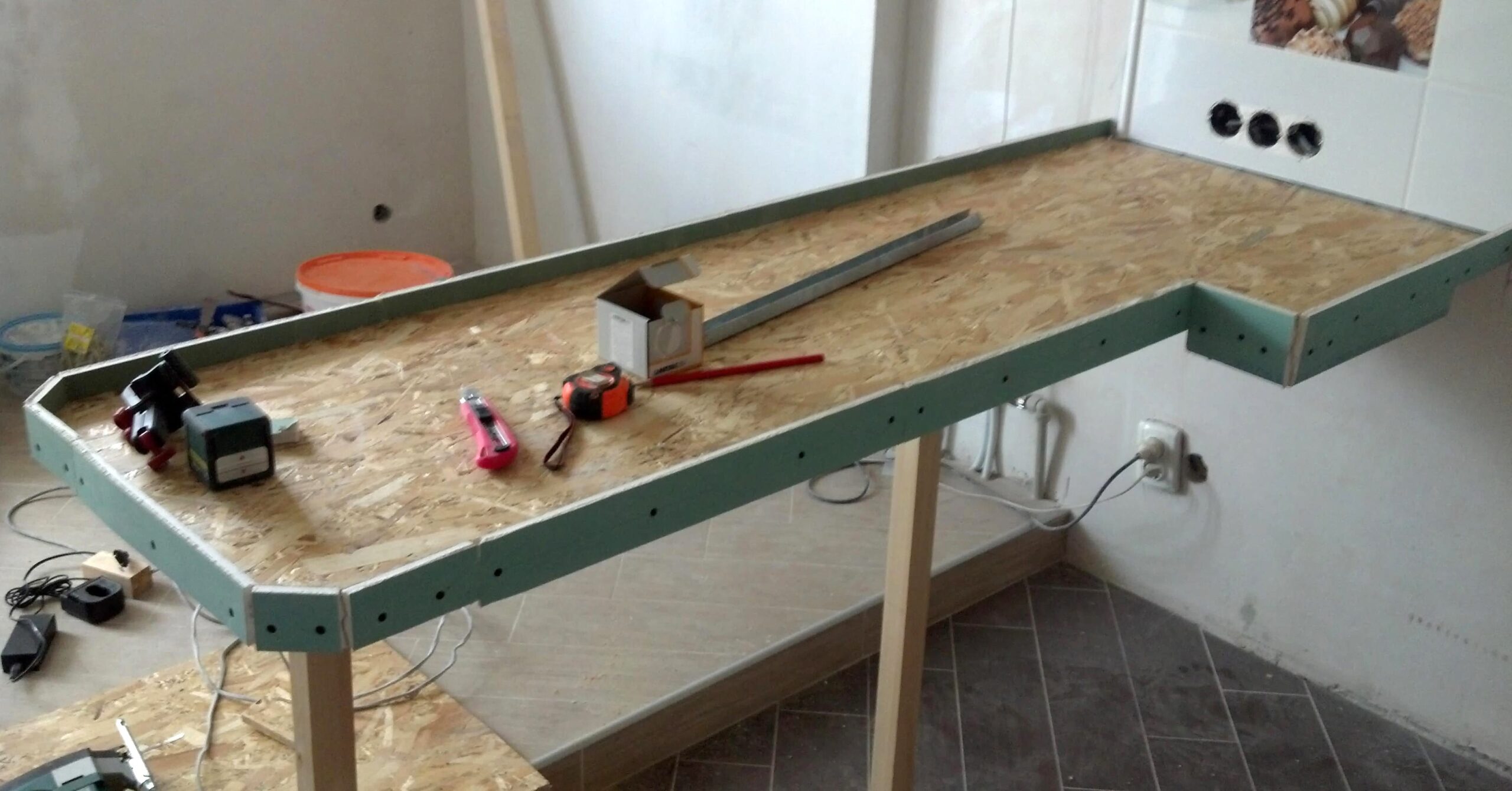
Remember that plywood flooring can expand in warm conditions, so do not put porcelain stoneware on it right away. Cover the countertop area with cement bonded particleboard. DSP is attached with the same self-tapping screws. At the joints of the plates, it is necessary to stick a fiberglass mesh. The holes for the sink and stove must be cut out by yourself using a jigsaw.
The edges of the tiles can be rough, therefore polishing work must be carried out prior to installation.

Installation of the plate
When applying tile adhesive, it is best to use the smooth side of the comb. Excess weight is well removed with the reverse side. You need to work quickly and in small areas, within 15 minutes the glue can be covered with a film and begin to dry.If the substance loses its elasticity, everything will have to be redone. When laying, form even seams using crosses. In order to avoid mistakes, the masters are advised to take a short level and check each tile for evenness.

A porcelain stoneware countertop can last longer than a decade. The material is beautiful and reliable, this is a great option for those who do not plan to engage in frequent repairs.

Video: do-it-yourself porcelain stoneware tabletop



